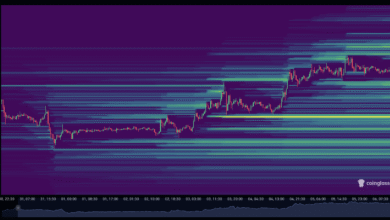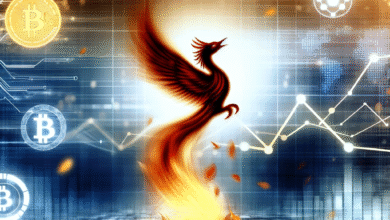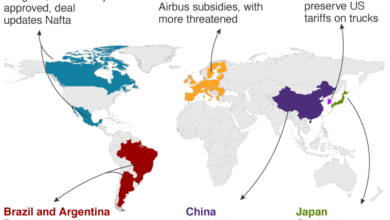Solana Name Service Revolutionizes Governance with SNS Token

The Solana Name Service (SNS) is revolutionizing how we interact with blockchain technology through its innovative decentralized naming protocol on the Solana blockchain. By introducing the SNS token, which boasts a total supply of 10 billion, the platform aims to empower .sol domain holders with governance capabilities that shape the future of this protocol. This strategic governance model incentivizes community participation, allowing users to vote on critical aspects like ecosystem incentives and development priorities. With an emphasis on user-driven growth, SNS ensures that both new and existing holders of .sol domains can influence the project’s trajectory. As the adoption of blockchain continues to rise, the Solana Name Service stands at the forefront, offering a simplified and human-readable approach to digital identities that enhances user experience significantly.
The Solana Naming Protocol, as it’s sometimes referred to, introduces a groundbreaking method of associating human-readable names with blockchain addresses. This initiative not only enhances user accessibility but also engages the community through its governance token, the SNS token, which actively involves .sol domain owners in decision-making processes. The interface of this decentralized platform allows for streamlined transactions and broad integration with Web3 applications, fostering a robust digital ecosystem. As the popularity of .sol domains grows, so too does the potential for users to shape the future of this decentralized naming service. In essence, the Solana Name Service is redefining the relationship between users and blockchain technology, promoting a more inclusive and manageable digital landscape.
Understanding the Solana Name Service (SNS)
The Solana Name Service (SNS) operates as a decentralized naming protocol on the Solana blockchain, designed to facilitate seamless interactions within the decentralized ecosystem. Unlike traditional naming systems, SNS converts lengthy and complex wallet addresses into human-readable .sol domains. This innovation is crucial for making blockchain technology more user-friendly and accessible to a broader audience, thus lowering the barrier for entry into decentralized applications and services.
With over 270,000 .sol domains registered, SNS has rapidly gained traction in the blockchain community. These domains don’t just simplify transactions; they also serve as unique digital identities for users. The ability to link a .sol domain, such as “username.sol,” with decentralized applications not only enhances usability but also contributes to the development of robust Web3 infrastructure, supporting everything from decentralized website hosting to intricate community structures.
Frequently Asked Questions
What is Solana Name Service and how does it operate?
The Solana Name Service (SNS) is a decentralized naming protocol built on the Solana blockchain. It simplifies blockchain interactions by transforming complex wallet addresses into easy-to-remember .sol domains, such as ‘username.sol’, which serve as digital identities for streamlined transactions and Web3 application integration.
How does the SNS token enhance Solana governance?
The SNS token is designed to decentralize governance by granting .sol domain holders the power to participate in decision-making related to protocol upgrades, ecosystem incentives, and development priorities, ensuring that the future of Solana Name Service aligns with its user community.
What is the total supply of the SNS token and how is it distributed?
The total supply of the SNS token is 10 billion. Its distribution includes 40% allocated to existing .sol domain holders and partners, 20% for future community incentives, and 26.25% for ecosystem growth, with the remaining percentages designated for core contributors and liquidity pools.
What are the benefits of owning a .sol domain through Solana Name Service?
Owning a .sol domain offers perpetual ownership, low transaction fees via the Solana blockchain, and seamless integration within the ecosystem. This allows users to engage in easier transactions, access decentralized website hosting, and utilize subdomains for enhanced functionality.
How many .sol domains have been registered with Solana Name Service?
To date, over 270,000 .sol domains have been registered under the Solana Name Service, showcasing its growing adoption and the increasing utility of decentralized naming within the Solana ecosystem.
Can you explain the role of subdomains in the Solana Name Service?
Subdomains in the Solana Name Service expand the utility of .sol domains by supporting various community structures, organizational hierarchies, and decentralized physical asset management, enabling more tailored blockchain solutions for users.
What is the governance framework provided by the SNS token?
The governance framework of the SNS token allows holders to vote on essential proposals related to funding allocations and technical upgrades within the Solana Name Service, promoting active participation and community-driven development.
What future developments can we expect for Solana Name Service?
Future developments for Solana Name Service include phased token claims for eligible users, detailed community involvement guidelines, and incentives for active participation in the ecosystem, aimed at fostering a self-sustaining and resilient platform.
| Key Point | Details |
|---|---|
| Decentralized Governance | SNS token allows .sol domain holders to make decisions on protocol upgrades and ecosystem incentives. |
| SNS Token Supply | Total supply of 10 billion tokens, with 40% allocated to existing .sol holders and community partners. |
| Domain Utility | Converts complex wallet addresses to user-friendly .sol domains, facilitating transactions and decentralized applications. |
| Ownership Benefits | Perpetual ownership of domains with low transaction fees and seamless integration into the Solana ecosystem. |
| Community Involvement | Future steps include phased token claims for users and detailed involvement guidance to foster a self-sustaining ecosystem. |
| Current Adoption | Over 270,000 .sol domains registered and 150 projects using the protocol for easier blockchain access. |
Summary
Solana Name Service (SNS) is transforming the way users interact with blockchain technology through its decentralized naming protocol. By launching the SNS token, SNS is not only empowering .sol domain holders with governance rights but also aiming to build a self-sustaining ecosystem. With widespread adoption seen in its registered domains and projects, SNS is set to redefine user experiences on the Solana blockchain while encouraging community involvement and innovation.




